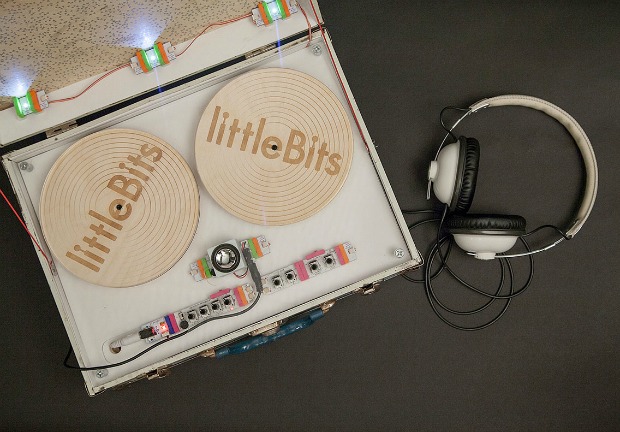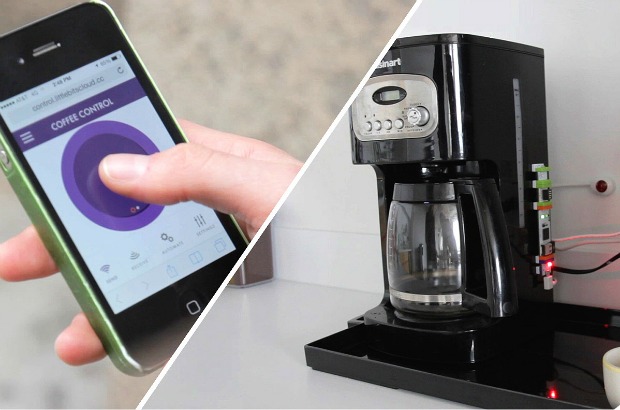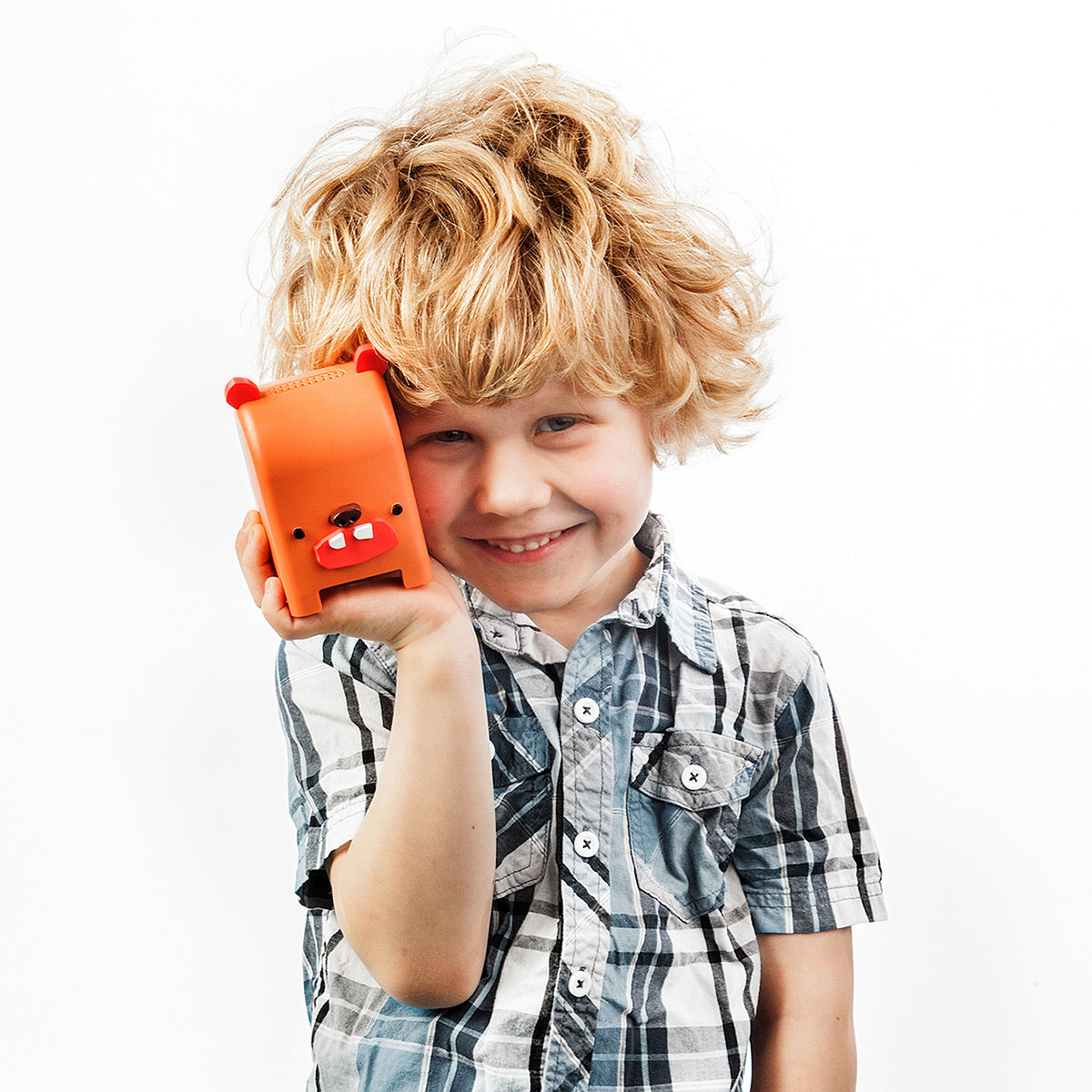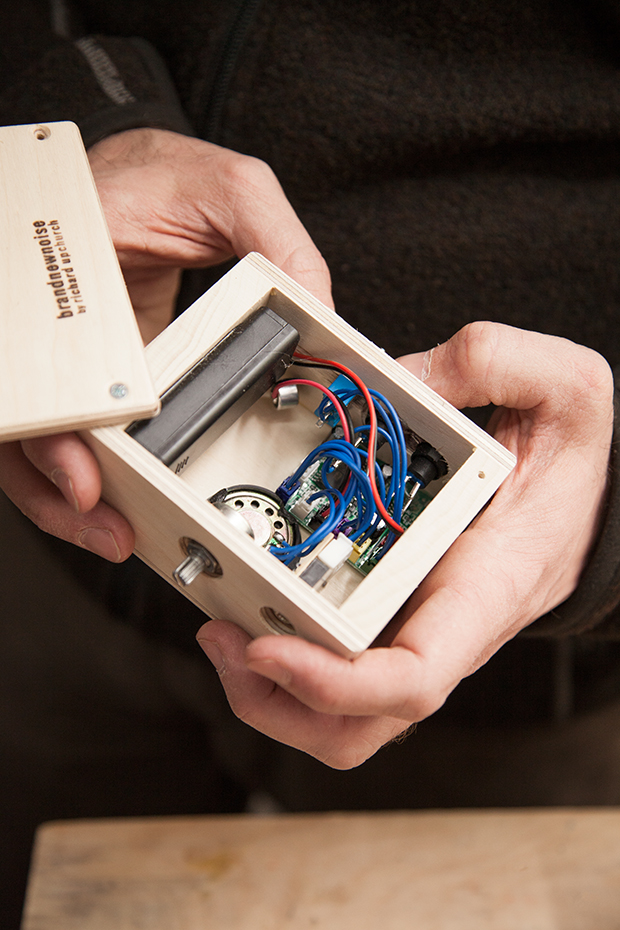A decade ago, Steven Johnson countered conventional wisdom with the audacious proposal that electronic media consumption is a beneficial societal force in Everything Bad is Good For You. Johnson makes a thoroughly convincing argument that an all-you-can-eat diet of TV and video games is actually good for people’s problem solving skills and overall IQ. Still, some will always be wary of too much technology, and more recent initiatives like Gever Tulley’s Tinkering School seem to encourage a return to hands-on experience and inventive play. Today, some trends try to reconcile these directions—tinkering with the inner workings of the diode and microchip world all around us. Ironically, other trends use invisible technology to encourage communication through playful interactions.
For those who may not even know they’re interested in electronics, Ayah’s invitation to play is enticing: “we’re trying to make [these modules] as accessible as possible and as instantaneous as possible, so you can see the results.” In her commitment to democratizing technology, she echoes cyberspace-defining writer William Gibson observation that “the future is already here—it’s just not evenly distributed.” For that matter, the culture behind these kits features an open source component, encouraging the sort of tool and material innovation fostered by Tulley’s tinkerers. Ayah comments on this aspect of her system:
We started to lose this ability to play with technology as technology started to become more finished and closed…[our goal] is to demystify technology…the magic of electricity is everywhere around us—it’s beautiful, and we have to contribute to it and be creative with it.
Still not convinced that a focus on the inner workings of electronics is a good idea? Allow us to introduce Milksop the Bear, a toy-meets-digital-communication critter that’s designed to divert kids from the inevitable pull of grown-up social media. He’s the invention of Guari Nanda, also a graduate of the MIT Media Lab, who comments “there are so many apps today that isolate kids from family…we wanted to create one that does the opposite.” Through his Wi-Fi connection and custom app, Milksop allows adults (mom, dad, grandma, grampa) to send messages to his kid companion. When Milksop grunts to say “you’ve got mail,” the messages are delivered in a whimsically modulated voice. Then, kids can respond by recording a voice message that’s sent back to their adult admirers through the app. No screen, no typing, no direct contact with the pitfalls of too much technology. Milksop utilizes kids’ natural tendency to have conversations with their toys, applying electronic components, code, and the cloud to connect generations, rather than giving kids too much screen time too soon. At the same time, parents can choose to use Milksop’s gentle take on cloud-based communication as their child’s first introduction to the digital world.
While we live in a culture of saving everything (voicemail, emails, social media feeds), I feel it’s important to celebrate the impermanence of things, to cherish the moment you’re living in. Take that moment, create within it, laugh, play, build a memory; then move forward into the next moment. It’s here that I find myself encouraged by the creative timing without being inhibited by comparing the past to present. This creates a space that allows us all—kids and adults—to play and create without inhibition.
From their handmade wood bodies to their whimsical, silkscreened “faces,” Zoots, Lil’ MIB, and Loopy Lou share the mission of Ayah’s modular bits—to make electronics accessible and endearing. For more on Richard’s easygoing but innovative approach to designing and building technological toys, follow along with our recent tour of his studio.






No Comments